Our out of town guests always insist on a Mexican meal (or two!) when they visit Yakima for a weekend, knowing that we are extremely spoiled because of the many authentic Mexican restaurants and taco vans located throughout the Valley. For about the past ten years, I have attempted to make Mexican-styIe beans but the inconsistency with each outcome lead me to reach out to my good friend, Araceli Munguia, for a proper lesson. I was grateful when she agreed to spend 3 hours with me earlier this week, to teach me how to recreate her family’s version of mashed beans, (though I’m certain my Toppenish-raised husband was even more grateful)!
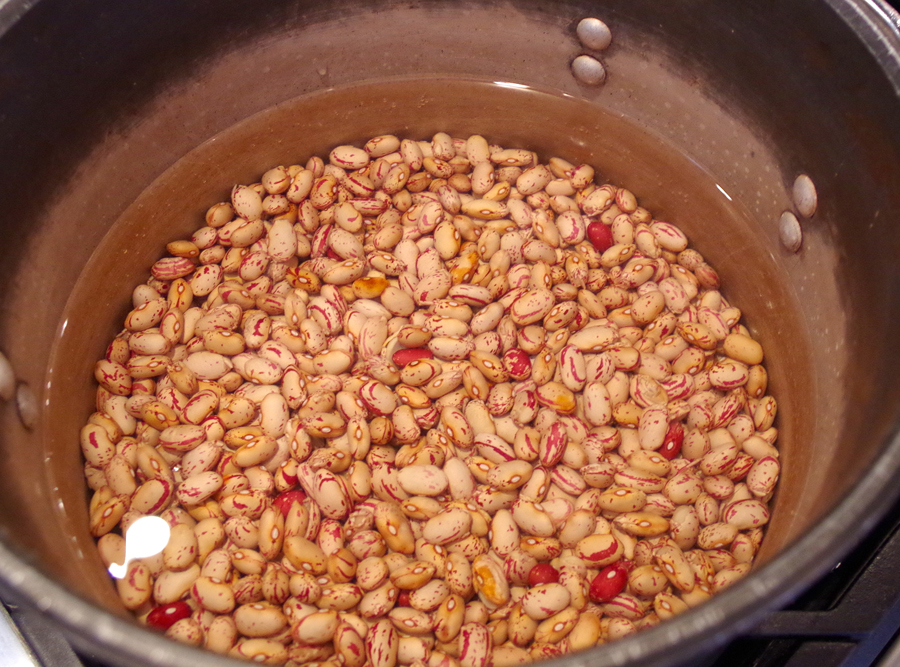 I have known Araceli since our high school daughters were in pre-school, but it’s funny how you can learn more about a person while cooking with them. Watching my friend’s comfort as she moved easily about my kitchen, sorting, chopping, stirring all the while sharing more of her earlier life’s details was heart-warming.
I have known Araceli since our high school daughters were in pre-school, but it’s funny how you can learn more about a person while cooking with them. Watching my friend’s comfort as she moved easily about my kitchen, sorting, chopping, stirring all the while sharing more of her earlier life’s details was heart-warming.
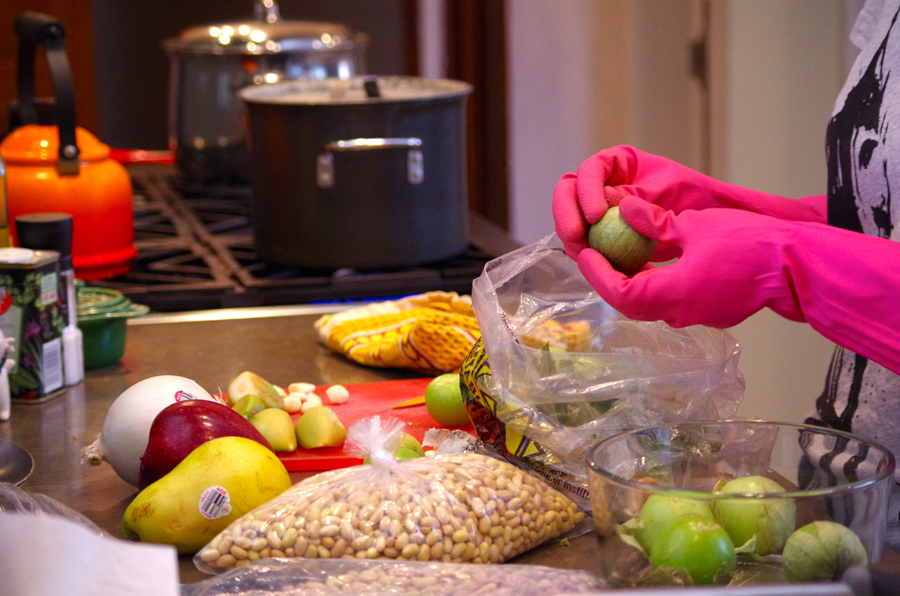 Araceli came to the United States from Mexico in 1980. She moved to Yakima with her family as a teenager. She learned to cook from her mother and her grandmother.
Araceli came to the United States from Mexico in 1980. She moved to Yakima with her family as a teenager. She learned to cook from her mother and her grandmother.
“Beans were a staple in my Mom’s house, with 8 kids, and a family of 10. We ate them almost everyday. She cooked daily, at 4 in the morning, before working two jobs. We ate beans for breakfast, lunch and dinner. Beans were easy to pack up and bring to work in the fields. Sometimes we ate chiliquiles: fried tortillas, eggs in sauce with cream for breakfast; for lunch, burritos with beans and cheese and whatever else she made that morning. We rarely ate out for meals. KFC for dinner was a treat after picking cherries for the day.”
This is happiness: in the moment, learning, connecting with my friend, over food and memories. I am fortunate she carved out the time with me, so that I can now create delicious hearty, nurturing beans for my family and friends with a bit more consistency and confidence.
These days, with four children, Araceli admits she makes beans about once a month, due to the time commitment (about 2.5 hours). “It’s time consuming! You have to check on the beans.” Not to mention physical! Mashing the beans looked like an upper body workout.
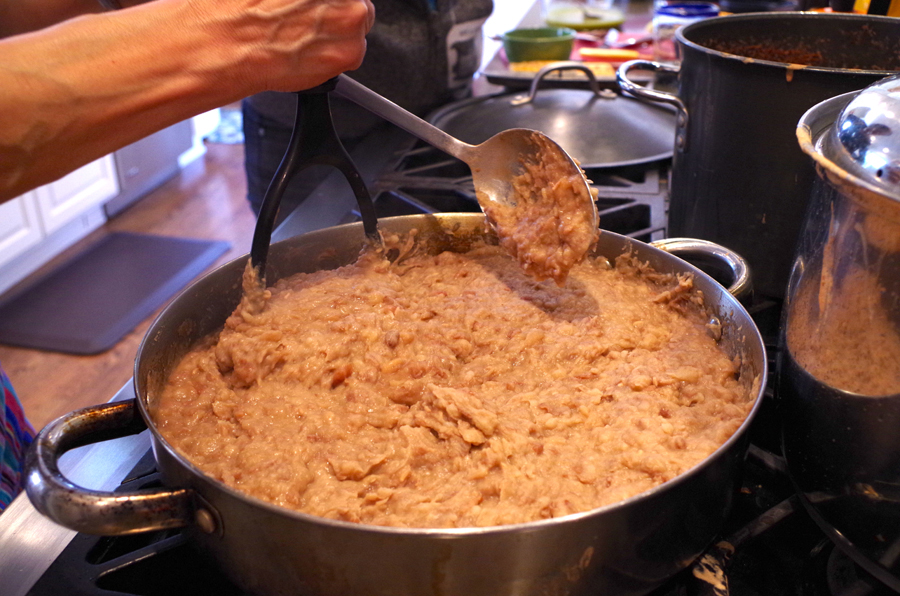 Incidentally, this was a timely lesson, since the United Nations declared 2016 the International Year of Pulses. A bean is a ‘pulse’, an edible seed that grows in a pod. Beans are a wonder-food: nutrient-dense, protein-rich, fiber-filled, low-fat, versatile, and affordable. They are a staple in the Mediterranean and Latin American diets and have been for centuries.
Incidentally, this was a timely lesson, since the United Nations declared 2016 the International Year of Pulses. A bean is a ‘pulse’, an edible seed that grows in a pod. Beans are a wonder-food: nutrient-dense, protein-rich, fiber-filled, low-fat, versatile, and affordable. They are a staple in the Mediterranean and Latin American diets and have been for centuries.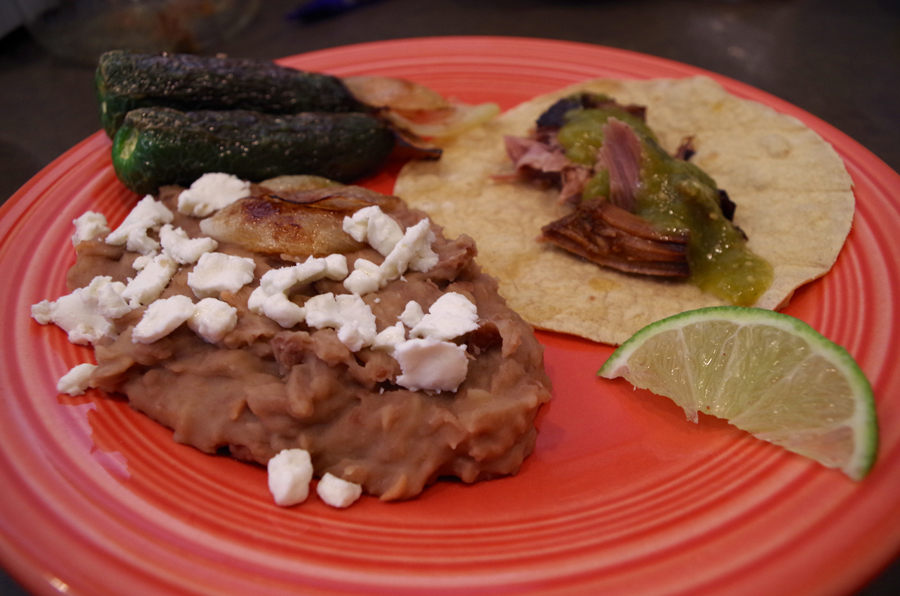
We paired Araceli’s beans with some slow-roasted pork butt, and it was a satisfying and comforting dinner for the next 3 nights. We used local Yakima Valley Cranberry beans, purchased in the late fall at the Yakima Valley Farmer’s Market. If mashing (refried), as the Munguia girls prefer, mix with Peruano beans to add to overall flavor and creaminess. Pinto beans can be used as well. Araceli’s salsa was made with tomatillos, peppers, onions and garlic which are all available locally in season.
Araceli’s Mashed Beans
Start with plump fresh local Yakima Valley Peruano and Cranberry beans.
Sort out any old or shriveled ones.
Triple wash and rinse beans until the water runs clear.
In a large pot combine desired amount of dry and cleaned beans, cover with fresh water about a half inch above beans.
Bring beans and water to boil water on high. Lower to simmer.
Add large peeled whole garlic cloves.
After about 1.5 hours, check for doneness of beans. Appearance and texture should be approaching soft and light and color.
Add approximately 2 TBSP of kosher salt to water.
Cook beans 15-20 minutes longer and check for softness.
Strain and serve whole or mashed.
To mash:
Using a sharp pairing knife, score 2 fresh jalapeño peppers and separate 1 white onion into pieces.
(Scoring will infuse flavor in oil.)
Heat 1 cup of olive oil on medium high in a shallow pan. Fry jalapeños and onions pieces in hot oil until golden brown. Remove from oil. Lower heat to simmer. Using a screened/slotted spoon, gently lower spoonfuls of beans into oil until a generous amount is in pan. Let sit in oil for a few minutes, then get to work on mashing with a bean mashing tool. Work the biceps and patiently mash away. Add more broth to beans as needed, based on your desired consistency.
Salsa
Peel and wash 8-10 tomatillos.
Wash and score 3-4 jalapeño and 3-4 serrano peppers.
Peel and separate about 8 garlic cloves. Place all in saucepan.
Add roughly 3 TBSP of water to pan.
Cover and steam on med-hi heat for 10 minutes.
Add about a half tsp. of salt.
Cool slightly.
Blend in a food processor or blender until smooth.
Serves with beans.
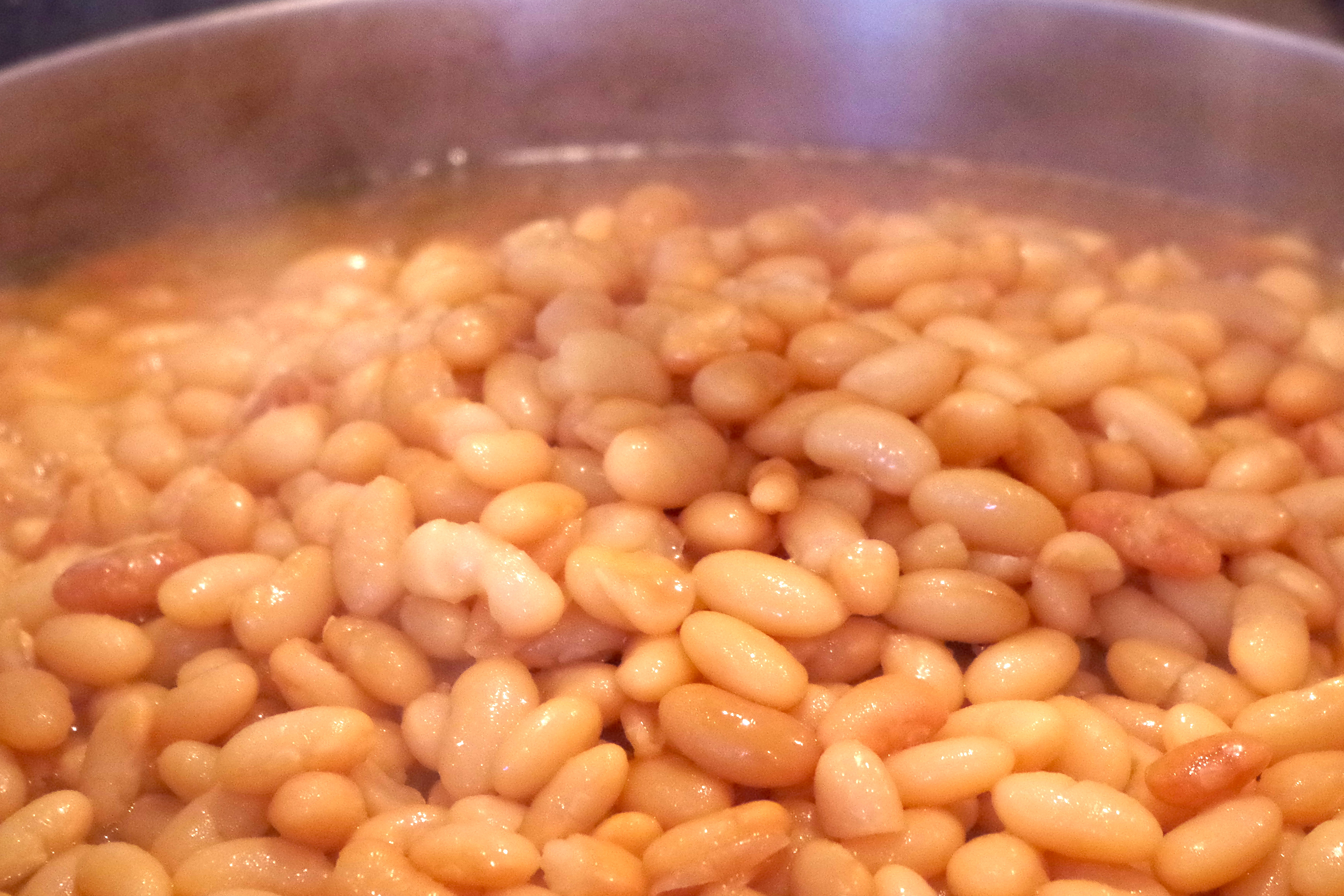





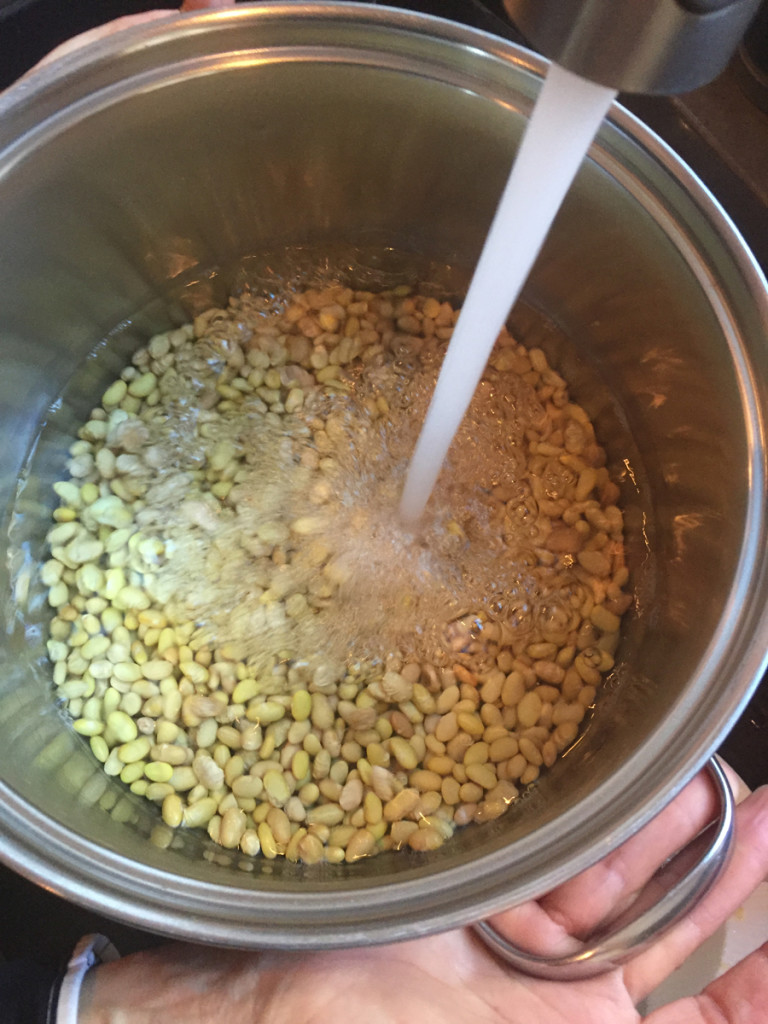
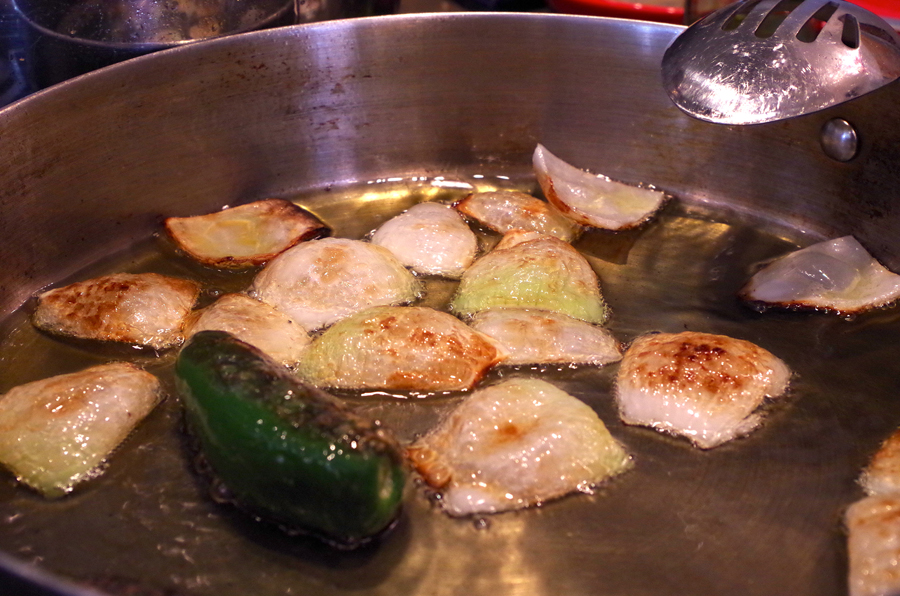
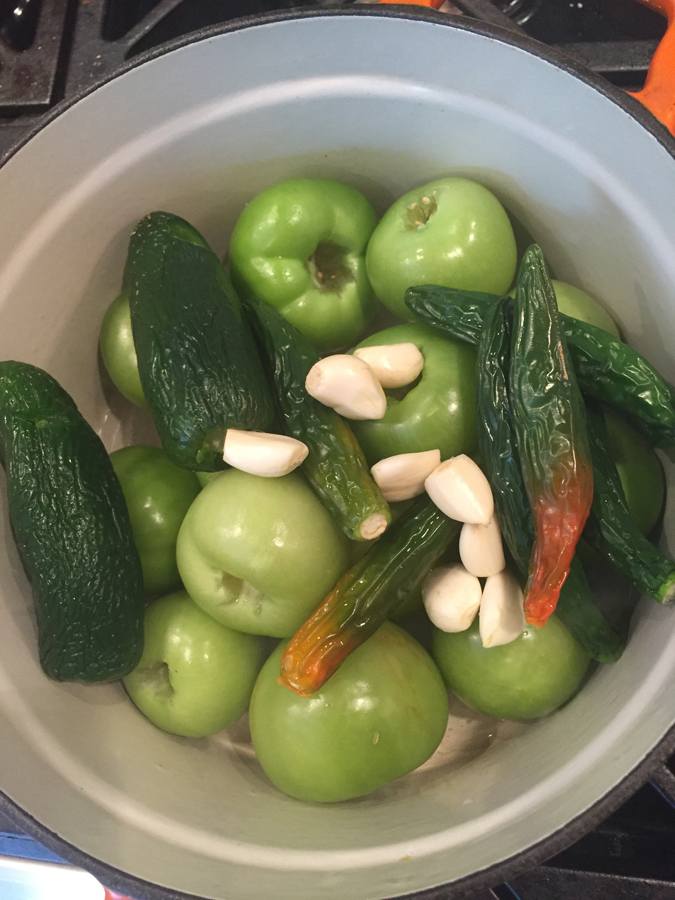

Wow!! Great article! Can’t wait to give these a try!
Great article! It is amazing how food brings people together.
Bravo, Aileen! You captured more than outstanding recipes for beans and salsa here.
Nothing like a large pot of simmering beans to help one slow down and savor a special friendship.
These sound wonderful!
Great article Aileen! You’ve encouraged me to give those mashed beans another try!
Mavis
Nice job, Aileen! Great, great piece.
Can’t wait to try the beans and salsa!! Awesome! Pizza ideas with the salsa???
Excited to give this a try! Thanks Aileen and Araceli!!
Rancho Beans,,,,,Mix Peruano, pinto, black, red, flor de mayo,,,,,Yummy!!!!!!!,,,fried beans, more yummy,,,,,,,
Love this Aileen! You’ve inspired me!
Loved this article, Aileen and thank you, Araceli! I have one question. When you remove the jalepenos and onion from the oil, do you ever mash those back in with the beans? Thanks.
Thanks, Megan! Araceli says though she removes the jalapeños and onions and serves them on the side (to accommodate her daughters’ preferences) her mom leaves both in the beans. She recommends you try mashing them, and says it would be delicious!